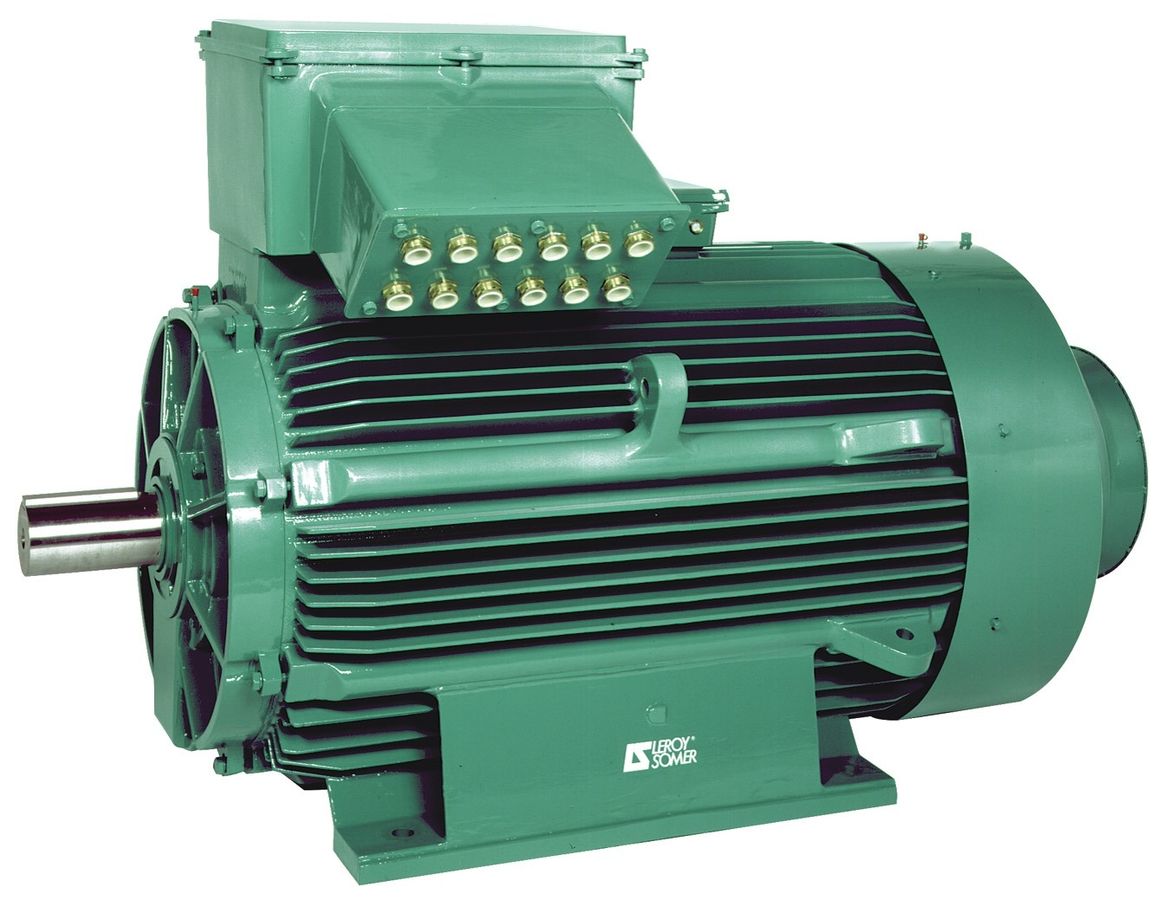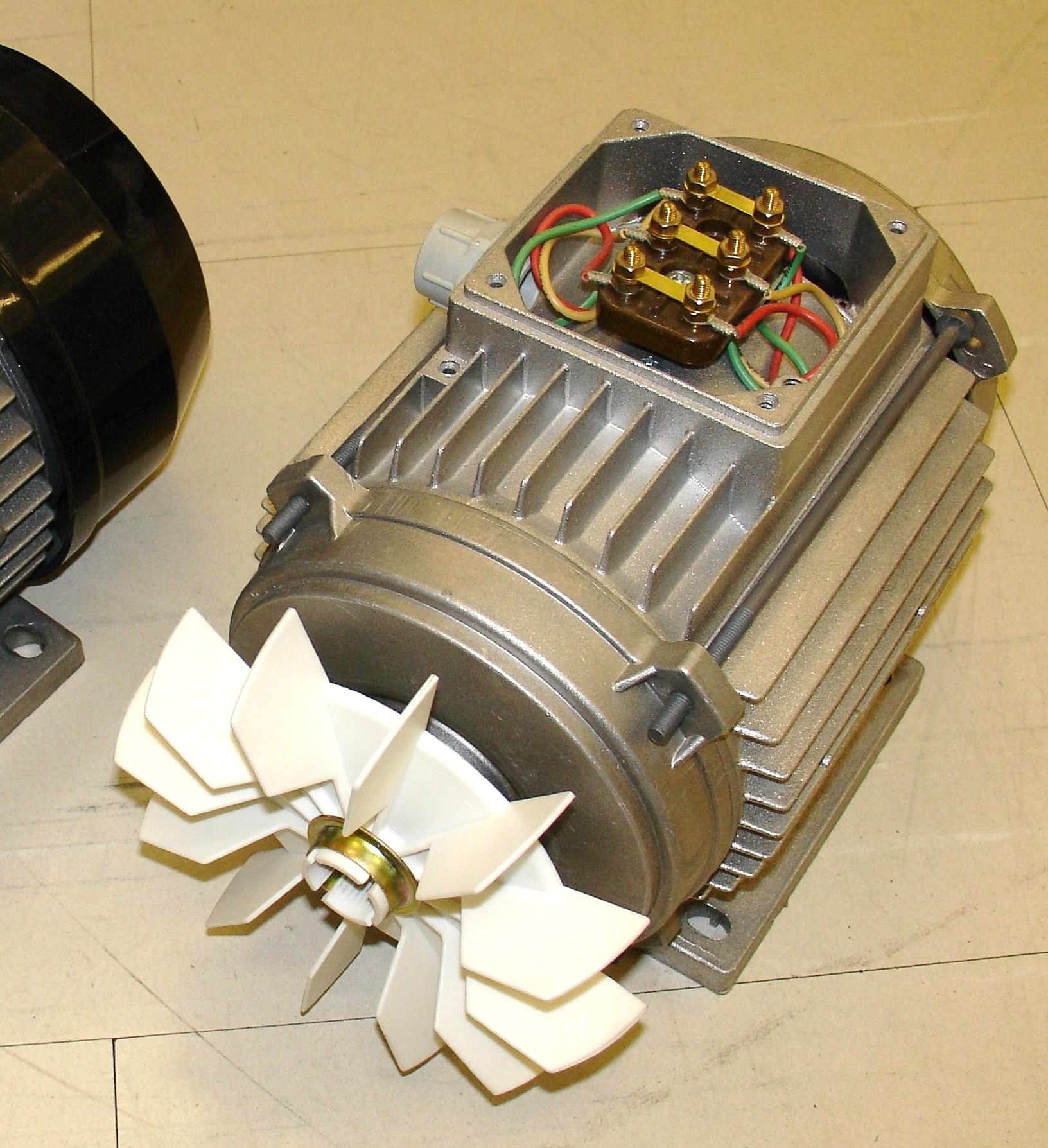Motor efficiency is calculated from the ratio of the mechanical power output at the output shaft to the input electrical power. The efficiency varies depending on how much mechanical power is demanded from the motor.

There are four main areas where power is lost in a motor:
Electrical losses occur in the stator/rotor windings because the conductors have electrical resistance, which generates heat.
The power lost is directly proportional to the square of the electrical current running through the winding and the resistance of the winding.


Motor Frame with Fins for Heat Dissipation (Wikipedia)
Also known as core losses, this is due to the imperfect nature of motors and their magnetic component design.
When a changing magnetic field induces eddy currents in the ferromagnetic material used in the stator/rotor, the eddy currents create heat and do no useful work. The ferromagnetic material is electrically divided into thin slices that reduces the negative effects of induced eddy currents that are unavoidable.

Steel Laminations to Reduce Eddy Current Losses (Wikipedia)
Some power is lost to friction from the bearings/commutators.
A motor's cooling fan can produce drag that requires power to overcome, called windage.

Motor Cooling Fan (Wikipedia)
These are minor power losses due to gradual degradation of an operating motor, and other losses that do not fit in the categories above.